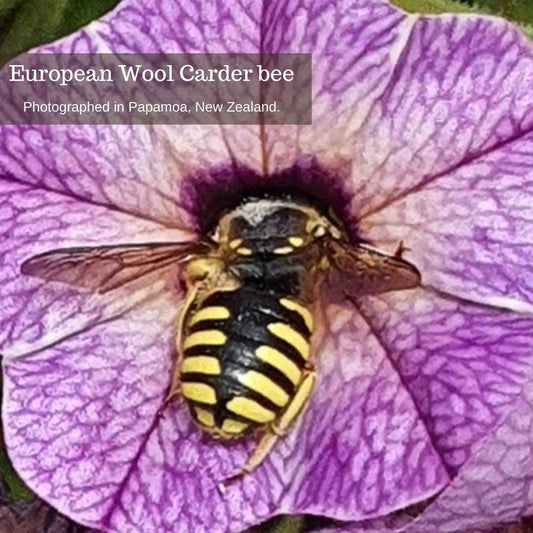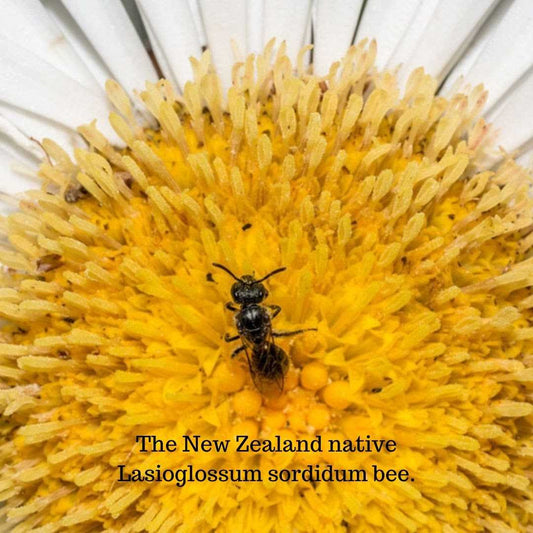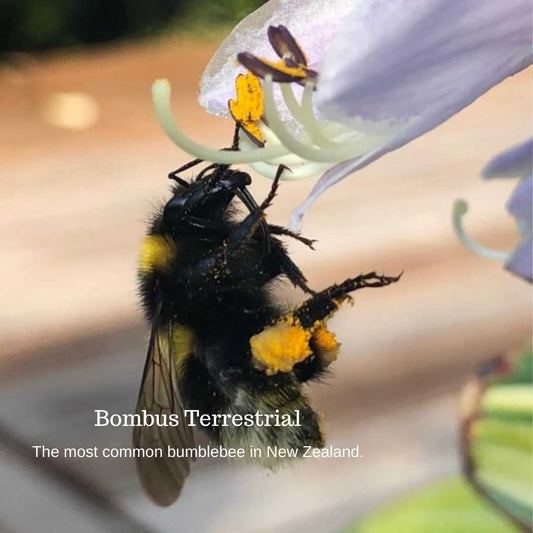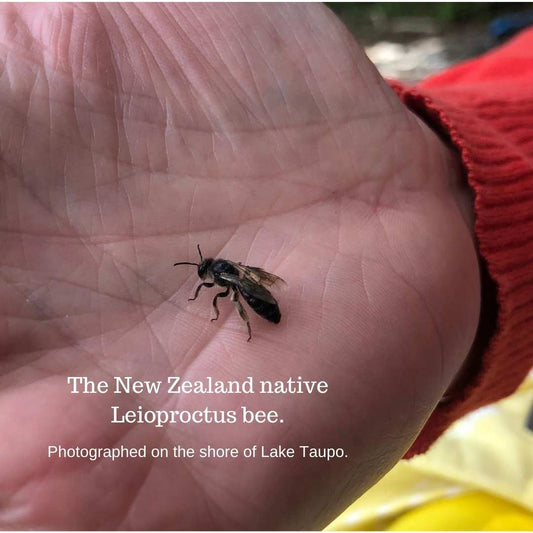Learn

European Wool Carder Bee - the new kid on the b...
Wool carders aren’t hive dwellers, but solitary bees that live in holes or cracks they find in wood or stems or in the ground. Who knows how it arrived here,...
European Wool Carder Bee - the new kid on the b...
Wool carders aren’t hive dwellers, but solitary bees that live in holes or cracks they find in wood or stems or in the ground. Who knows how it arrived here,...

Our smallest native bee
There are actually four native species of Lasioglossum in New Zealand. At only 4-8 mm long, Lasioglossum sordidum are one of the smallest bees. They are black or greenish and only moderately hairy, so at a...
Our smallest native bee
There are actually four native species of Lasioglossum in New Zealand. At only 4-8 mm long, Lasioglossum sordidum are one of the smallest bees. They are black or greenish and only moderately hairy, so at a...

Humble Bumblebees
The worldwide decline of the bee has not excluded the bumblebee, with some species now on the endangered list. The removal of wildflowers from their habitat is contributing to its decline.
Humble Bumblebees
The worldwide decline of the bee has not excluded the bumblebee, with some species now on the endangered list. The removal of wildflowers from their habitat is contributing to its decline.

What are bees, and what is bee pollen?
We all know the honey bee and that it operates in a colony, but most species of bee are in fact solitary. An adult female finds a suitable site and constructs a...
What are bees, and what is bee pollen?
We all know the honey bee and that it operates in a colony, but most species of bee are in fact solitary. An adult female finds a suitable site and constructs a...

